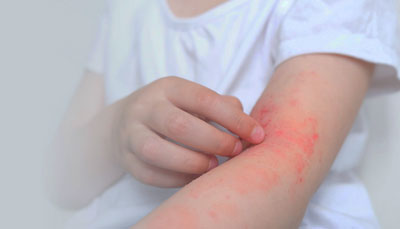
Welcome to the world of skincare and health, where understanding your skin is the first step towards a happy, healthy life! Today, we're diving deep into a common yet often misunderstood skin condition – Allergic Contact Dermatitis (ACD). If you've ever experienced a sudden skin rash and wondered what caused it, you're not alone. ACD affects millions worldwide, and today, we're here to demystify this condition.
Imagine wearing your favorite necklace and developing an itchy rash around your neck – that's ACD in action. It's a skin reaction that occurs when your skin comes into direct contact with an allergen – a substance that your body perceives as harmful, even though it might not be. This reaction is not immediate and can take anywhere from several hours to a few days to appear.
ACD can be triggered by various everyday substances. These include:
- Metals like Nickel: Often found in jewelry, buttons, and zippers.
- Beauty Products: Fragrances and preservatives in cosmetics and skincare products are frequent offenders.
- Rubber and Latex: Present in gloves and some types of footwear.
- Plants: Poison ivy, oak, or sumac are well-known triggers.
- Topical Medications: Certain creams and ointments applied to the skin.
The symptoms of ACD are hard to ignore. They include:
- Itchy, red skin where the contact occurred.
- Rash or blisters, which can sometimes ooze.
- Chronically affected skin may become thick and leathery.
- In severe cases, the rash can spread beyond the contact area.
Identifying ACD involves a combination of methods:
- Patch Testing: This is the gold standard for diagnosing ACD. Small amounts of potential allergens are applied to the skin under patches and checked for reactions.
- Skin Biopsy: To rule out other conditions like eczema.
- Patient History: A detailed discussion about previous reactions and exposures is crucial.
Once diagnosed, the focus shifts to managing ACD effectively:
- Avoid the Allergen: This is the most crucial step in managing ACD.
- Topical Corticosteroids: These can reduce inflammation and are typically the first line of treatment.
- Immunosuppressive Agents: Used in severe cases to suppress the allergic response.
- Phototherapy: Beneficial for chronic ACD, this involves controlled exposure to UV light.
- Antihistamines: These can provide relief from itching.
Preventing ACD is all about being proactive:
- Know Your Allergens: Patch testing can help you identify what to avoid.
- Choose Products Wisely: Opt for products designed for sensitive skin, free from fragrances and harsh chemicals.
- Protective Measures: Wear gloves or protective clothing to minimize contact with allergens.
- Read Labels: Always check the ingredients list on skincare and cosmetic products.
- Be Vocal: Don't hesitate to ask about the materials in jewelry or clothing items before purchasing.
- Educate Yourself: The more you know about ACD, the better you can manage it.
Allergic Contact Dermatitis doesn't have to be a mystery or a constant discomfort. With the right knowledge and tools, you can identify your triggers, manage symptoms, and lead a comfortable, rash-free life. Remember, every skin is unique, and understanding yours is key to your well-being. Stay informed, stay proactive, and let your skin thank you!

